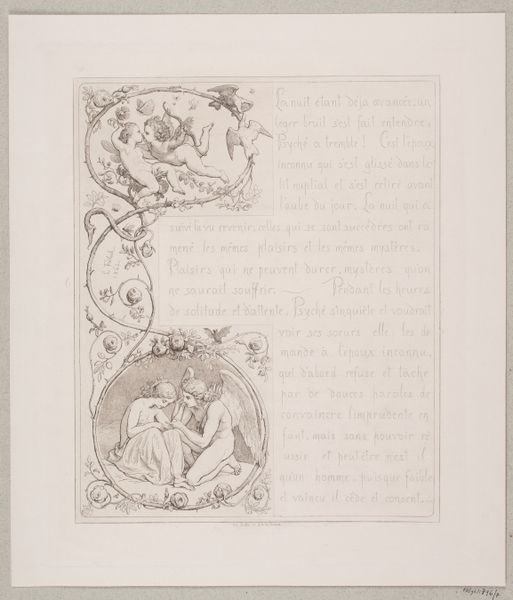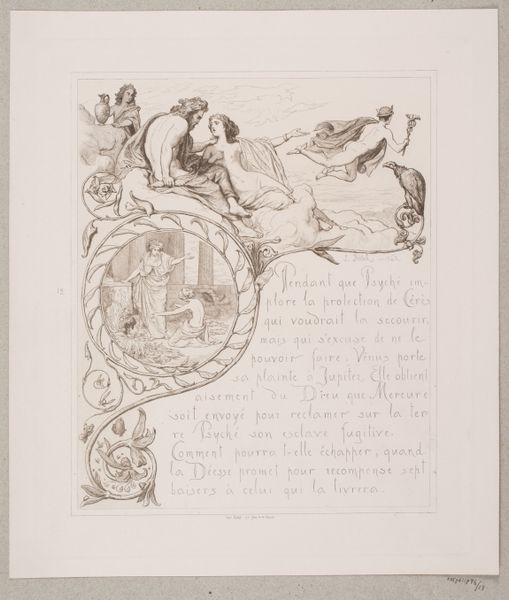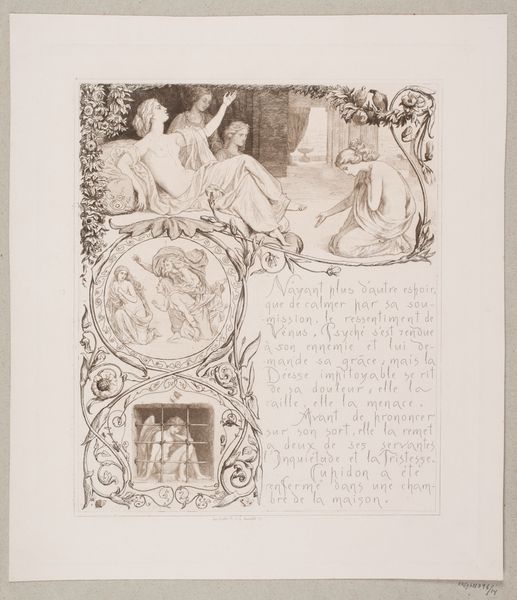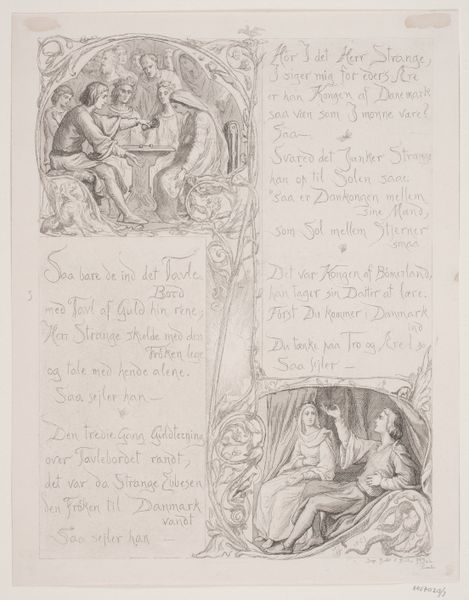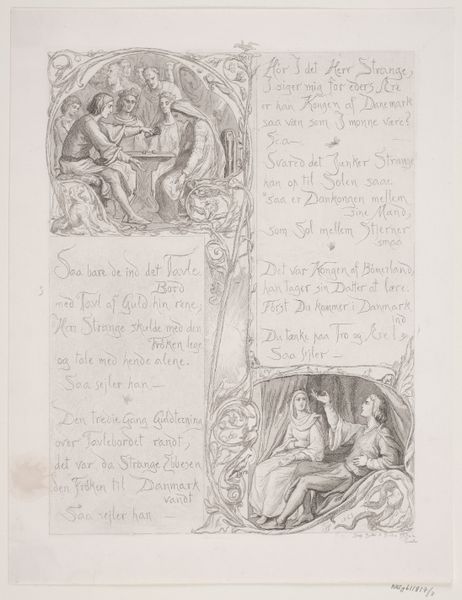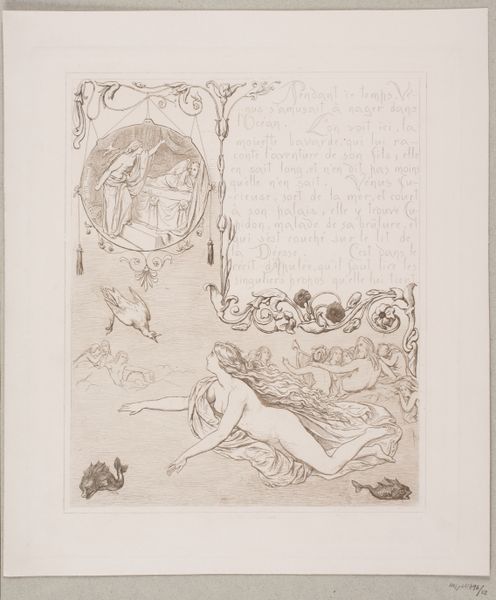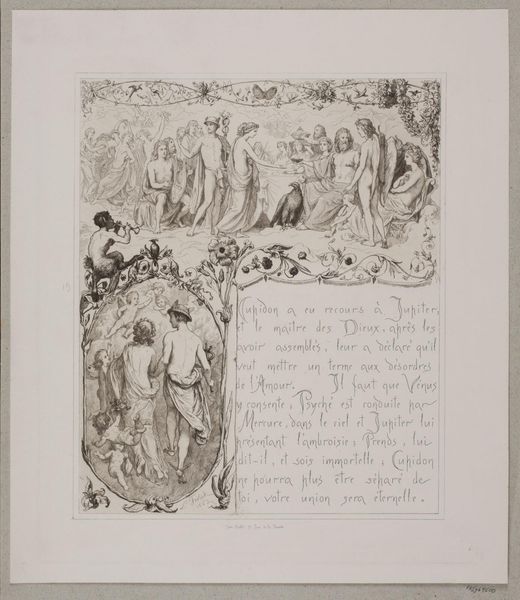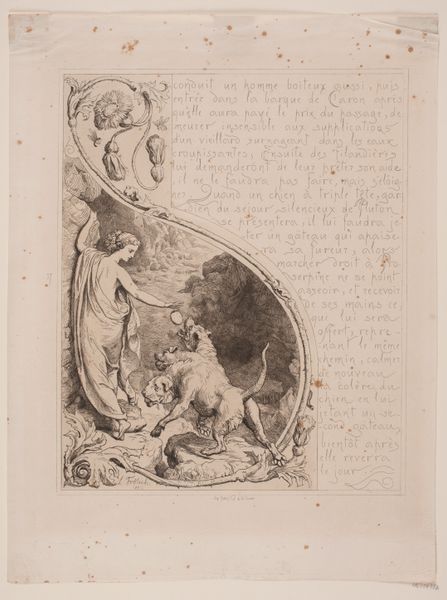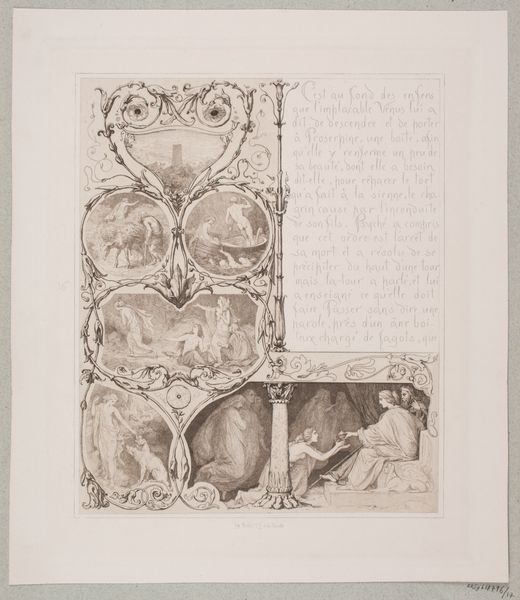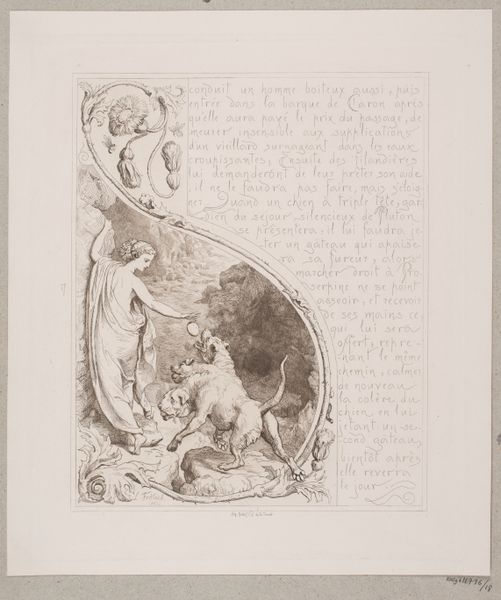
print, engraving
#
comic strip sketch
#
light pencil work
# print
#
pen sketch
#
personal sketchbook
#
sketchwork
#
ink drawing experimentation
#
pen-ink sketch
#
sketchbook drawing
#
storyboard and sketchbook work
#
sketchbook art
#
engraving
Dimensions: 354 mm (height) x 302 mm (width) (bladmaal)
Editor: This is Lorenz Frølich's "Illustration nr. 3 til 'L'Amour et Psyché'," from 1862. It appears to be an engraving. What immediately strikes me is how it resembles a page from a medieval manuscript, or even a comic strip. There are these separate panels with very fine details, and then script between them. How do you interpret this work, considering its context? Curator: It's crucial to understand the context of illustrated books and their public role in the 19th century. Frølich wasn't just creating art; he was contributing to the wider dissemination of classical stories to a broader audience. The integration of image and text – as you pointed out, resembling a comic strip – makes this artwork so interesting, don’t you think? Editor: Yes, definitely! The combination of image and text suggests accessibility and, potentially, a desire to popularize classical mythology for a growing readership. Do you see that as a commentary on high versus low culture? Curator: It could be interpreted as such. During that period, there was tension between preserving 'high' art and making culture more accessible. Publishers often sought ways to render classic literature more marketable, as you mention, but this meant making sure that images such as these didn’t undermine elite authority by being perceived as unsophisticated. What do you think are the key visual motifs here? Editor: I see sphinxes, classical figures, winged creatures. All of it contributes to an atmosphere steeped in classical antiquity, like the imagery aimed for scholarly and upper-class readership. Curator: Precisely. And Frølich, by visually connecting it with newer media formats, subtly renegotiates the role of these visual symbols in a modern context. Considering that context, it makes this simple illustration more culturally relevant than initially apparent, doesn't it? Editor: Absolutely. It shifts my understanding of the work from simply an illustration to a piece of cultural commentary. Thank you.
Comments
No comments
Be the first to comment and join the conversation on the ultimate creative platform.
